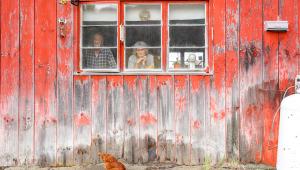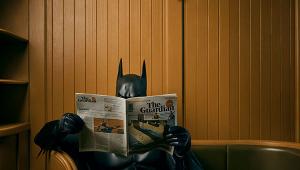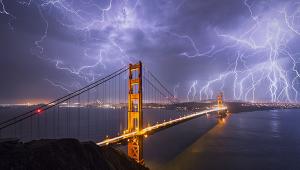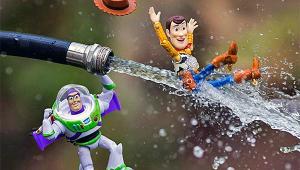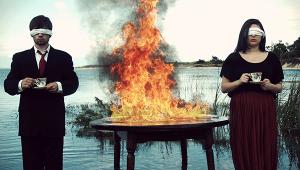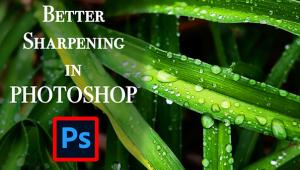The Wild Life: John Hyde Treks Deep into the Wilderness to Capture Amazing Images of Nature
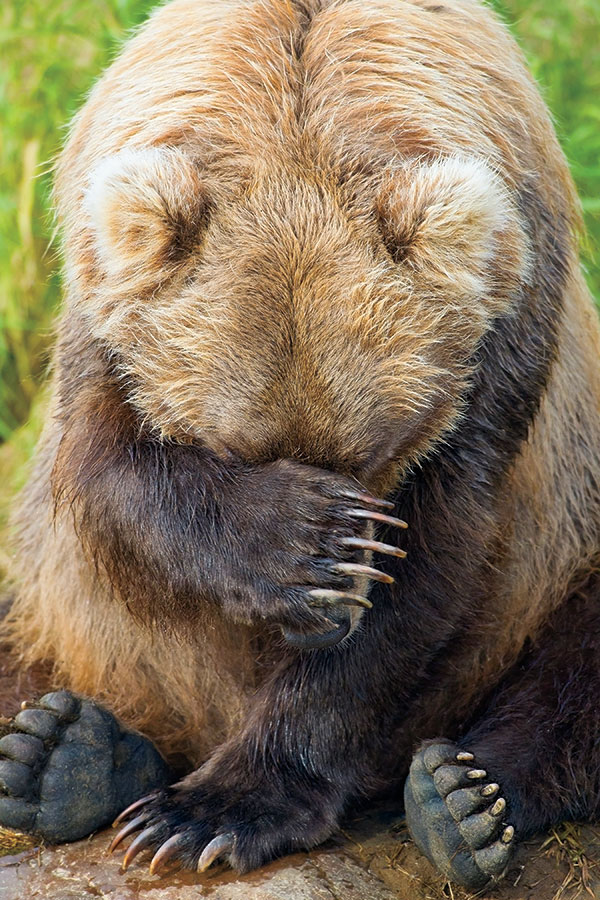
This is a female brown bear that finally found a moment of peace at the end of the day after dealing with two rowdy cubs, which were now resting quietly out of frame. “I was hiking back to camp down the middle of a stream and came upon this scene. I was carrying the camera with attached 600mm lens over my shoulder on the tripod—a little risky but the only way I could get set up fast enough if I saw something promising. And it paid off.”
All Photos © John Hyde
It’s one thing to sit in the safety of a Jeep or Land Rover while photographing the wildlife of the Serengeti. It’s quite another to be one with nature, coming face to face with wild creatures on their level, and even to establish a certain rapport with the animals. Then add yet another ingredient: enduring harsh Arctic conditions for hours, if not days, on end, just to get that one great shot. Welcome to the world of wildlife and nature photographer John Hyde.
Based out of Juneau, Alaska, John Hyde photographs Arctic wildlife, primarily in Alaska but also in the Canadian Yukon. Much of that photography is done at Hyde’s own pace. “Most of my wildlife and nature photography is shot for stock or editorial use for books and magazine articles,” Hyde notes, “but some is shot on assignment.”

“This was an unusually calm morning in Alaska’s Inside Passage. I was in a small skiff and for about two hours this pod of orca traveled along the same route. The water was like glass and I could very easily see the whales as they approached, surfacing and diving under and all around me. The boat was moving slowly, at a steady speed, and, even though they would swim off for a few minutes, they continued to come back again and again.”
Where The Wild Things Are
Making yourself in demand as a wildlife and nature photographer doesn’t come without some risk, however. “I never really had an encounter with an aggressive animal looking to do me harm. That’s not to say that I haven’t come face to face with some dangerous wildlife. Quite the contrary. I’ve been in situations where a bear was as much surprised by me as I was by it.
“It’s not always the animals that can put you in jeopardy in this kind of environment. More often the environment itself can be fraught with peril and can certainly pose a challenge. It can suddenly produce situations where you’re more at risk than when you are with your subjects, such as falling in a crevasse or a boat flipping over in freezing cold water. Thankfully, none of these things has happened to me—but that’s only due to my diligence and preparation—and luck.”
In pursuit of that one elusive wildlife shot, Hyde has stayed in one wilderness area for several days at a stretch, even a week, from dawn to dusk each day. Communicating with the outside world from these locations can be iffy. “Where I am, I normally can’t use a cell phone, but I can usually use a satellite phone. That said, I’m familiar enough with the areas I frequent so that I know where a cell phone can be used, so I take one with me anyway. What’s more, here in Alaska, you can also get good coverage with a VHF marine radio.” Hyde also recommends carrying a GPS.

“In the spring, large schools of herring spawn in very shallow water along the shoreline, signaling the bald eagles to gather in nearby trees and take part in this plentiful harvest. The toughest part for me is deciding which eagle to follow. So, to simplify things, I just pick a bird and stay with it, follow-focusing as it selects and dives after one fish with talons extended. I use a really small boat, so I’m low on the water and unobtrusive. The eagles don’t see something in the water as threatening, as opposed to when you’re standing on the shoreline. For these shots, I routinely use a 70-200mm on one camera body and a 100-400mm or a 300mm on the second body.”

“This is a wolf I’d been photographing for three years, so he was used to me and not disturbed by my presence. I was on my knees in the snow and he was about 40 feet away, engaged in play with a dog he had befriended. This was a wild wolf that chose to spend his winters along a lakeshore popular for recreational activities.” Hyde used a 70-200mm lens for this shot.
Amazing Encounters
Staying safe does not mean you’ll have a boring day. “I’ve had so many awe-inspiring experiences,” Hyde says. “My most awesome wildlife encounters, and also my best photographs, come from when I’m out in the field for a long time with a particular subject. They get to know me and accept my presence, and may even come close to check me out, but in a non-aggressive manner.” For instance, Hyde enjoyed a rare wilderness bond with a lone wolf, which he photographed for three years, until it disappeared.
These encounters are not limited to land mammals. “I’ve had orcas (killer whales) come up to my skiff and swim around me, even rubbing on the bottom of the boat and coming up within a few feet, then just look at me. They’re not afraid of you and they do it in a way that’s not threatening.”
Stranger still, perhaps, is this: “On two separate occasions, years apart, a female humpback whale swam up to my boat with her calf, and left the calf with me, as if I were a babysitter, while she went off to feed or do whatever. The calf stayed with the boat until the mother came back 20 or 30 minutes later and swam off with the youngster.”
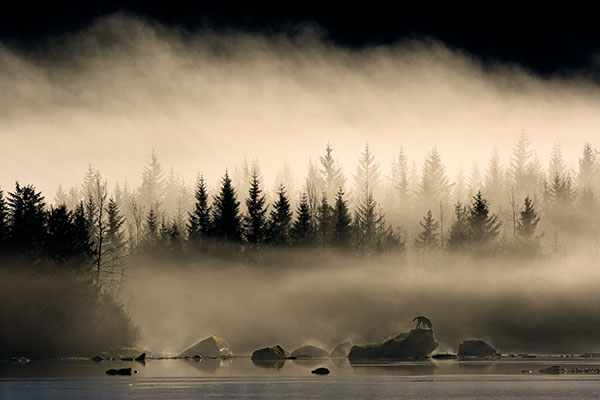
“The key to capturing a true wildlife portrait is to pick a spot where animals frequent and then wait for your subjects to arrive. I was passing through the area, walking around the lake to get to that big boulder where the wolf usually liked to rest and keep an eye on his territory. I was still quite a ways off when I saw him leap up onto the boulder, so I used a 600mm lens. It was early morning, a little past dawn, and the sun had come up over the mountain beyond to light up the mist hanging above the river and trees along the shoreline.”
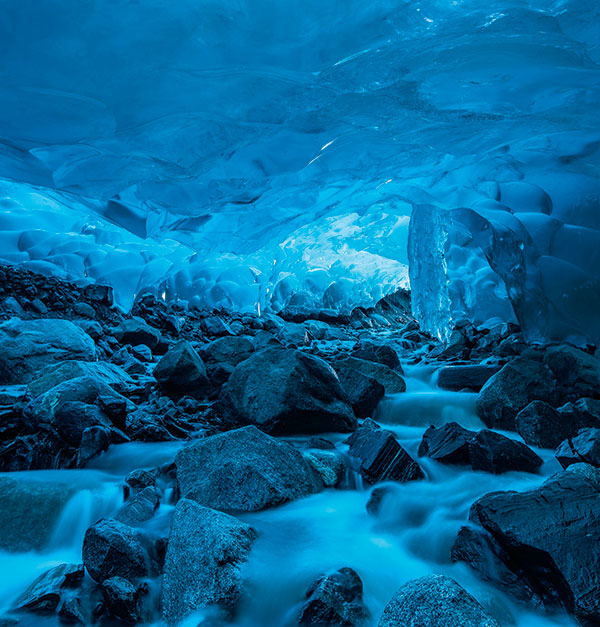
This ice cave lies beneath the Mendenhall Glacier, in Juneau, Alaska. “I couldn’t capture this scene adequately in one frame, even with the 16mm lens I was using. So I shot three overlapping vertical frames, at f/8 or f/11 for 15 seconds, and then stitched them together in Adobe Photoshop. The camera was mounted on a Really Right Stuff tripod standing in a stream and triggered using the self-timer on the camera.”
Perfect Moments
Capturing that one special moment is what John Hyde’s photography is all about. “I like to capture a decisive moment in an animal’s behavior. Something that has a lot of action, or that really portrays the animal’s personality. To get that, you have to be really aware of body language and behavior. Just going out there and shooting something cold and not knowing that much about your subject puts you at a real disadvantage.”
Hyde continues: “When you’re trying to get that decisive moment, you have to be prepared. If you have your back turned or happen to be taking a bite out of a sandwich just when the moment happens, you’ve missed it. The moment is there, and then it’s gone. That’s why wildlife photography can be so challenging. You have to be 110 percent alert.”

This was shot on ISO 100 film with a Canon EOS 1-series camera and a 600mm f/4 lens. “Black bears were feeding on salmon at a stream in Alaska’s Tongass National Forest. When the salmon return to spawn, mostly in July and August, there are places where the fish congregate as they attempt to negotiate the next hurdle upstream, and that attracts lots of bears. There are huge boulders along this stream. To gain an advantage over the fish, this bear stood in the shadows between two boulders. But to catch a fish, he had to stick his face out into the late morning light. So I used that opportunity to photograph him, with a subtle hint of the river in the foreground.”

“We were on the Alsek River, in the Yukon, scouting for bear signs, when we came upon this scene. Now that it was getting colder, the glaciers that fed this river weren’t producing as much meltwater and water levels had subsided, revealing these grizzly bear tracks in glacial silt. You know it’s a grizzly because the claw marks are further from the toe pads than they would be for a black bear.”
To see more of John Hyde’s work, visit www.wildthingsphotography.com.
- Log in or register to post comments



